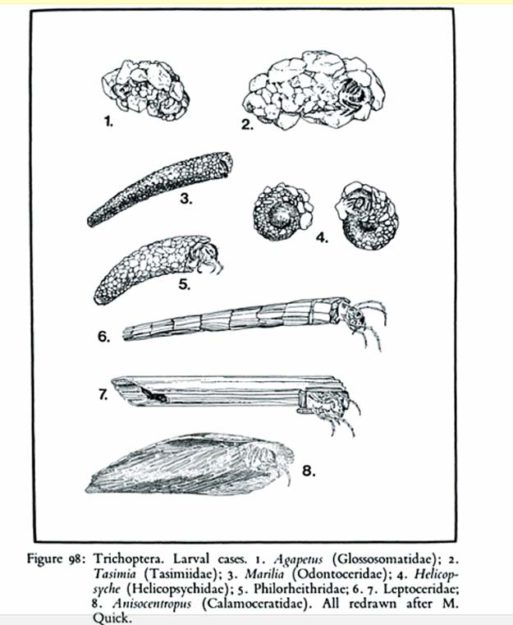David Williams Williams, Australian freshwater life: the invertabrate of Australian inland waters, Melbourne, MacMillan, 1980.
Many larvae build protective case out of a wide range of materials obtained from their habitat, or from a silk-like secretion from glands in their mouth. Materials often used include sand-grains, gravel, pieces of twig, leaves, bark, grass and small shells. Cases take many different forms: some are conical, others are square or triangular in cross-section, and yet others may have side « flaps » or even be helically arranged. Somes cases are illustrated in
Fig. 98.

Unfortunately, it is not always possible to identify larvae by their case alone, as to some extent this depends upon the nature of material available. Many species with case (c.g. certain species of the Leptoceridae) are able to swim with their case.